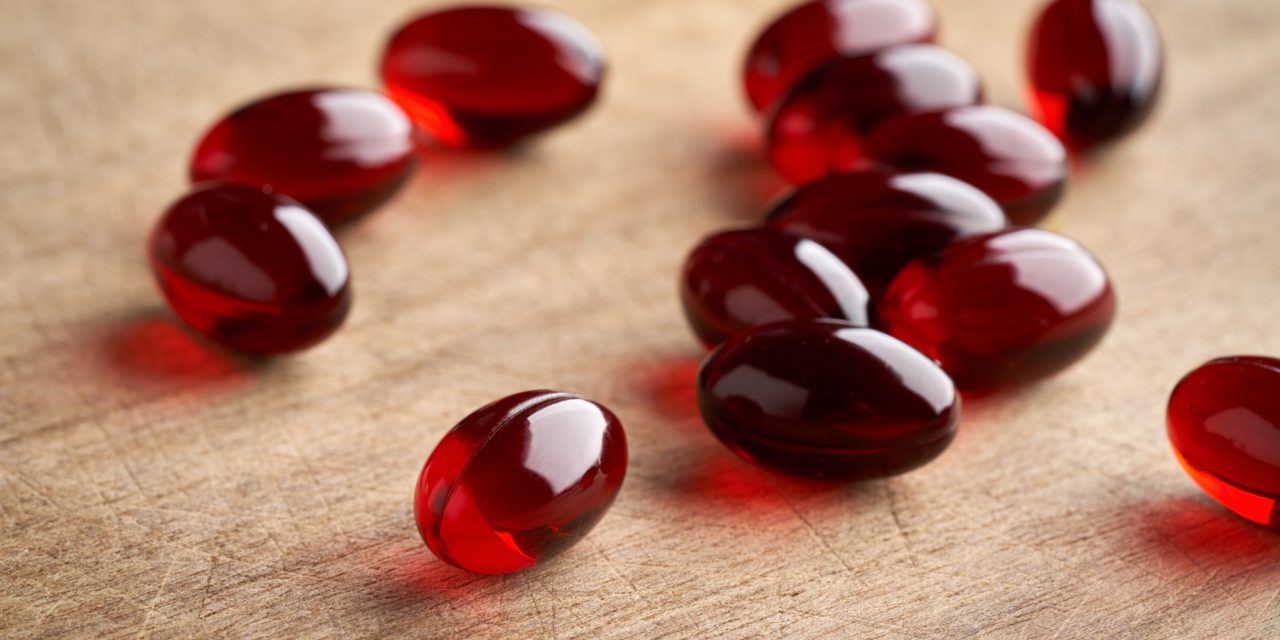Rich in EPA, DHA, antioxidants, and brain-boosting choline, krill oil has been shown to promote heart and brain health, control blood sugar, help joints stay supple, and even soothe several mild, occasionally physical, symptoms of the menstrual cycle.
1. Unique Structure
Unlike fish oil, the omega-3 in krill oil comes in phospholipid form. Phospholipids dissolve easily in both fat and water, which helps with their digestibility; plus, they can go directly to the cell membranes and increase the absorption of omega-3.
2. The Choline Factor
Helps support healthy memory and communication between brain cells, choline is typically found in beef, liver, and chicken, so those who don’t consume a lot of meat often lack it.
3. A Pure Source
Because it’s derived from tiny bottom-of-the-food chain shellfish in the cleanest ocean on earth, the Antarctic, krill has non-detectable harmful levels of contaminants and toxins that can sometimes make their way into fish oil.
4. Bye, Bye Burps
Omega-3s from phospholipids are water soluble, so they don’t pool on top of the stomach, prompting reflux and fishy aftertaste, like some fish oil supplements can.
5. Big Impact In Small Dosages
Research suggests that the body uses omega-3s from krill more efficiently than some other sources, meaning you can get better effects taking smaller and fewer softgels per day.
6. An Astaxanthin Boost
This reddish antioxidant is shown to be 300 times more potent than Vitamin E and A and helps protect cell membranes from free-radical damage. It’s also a natural preservative that keeps krill oil fresher longer.
7. Head-To-Toe Benefits
Omega-3s’ EPA and DHA support healthy hearts and blood pressure. Some research has shown that krill has an edge when it comes to optimizing healthy cholesterol and decreasing triglycerides. In addition to heart health benefits, more than 8,000 human studies support omega-3s for supporting eye, brain, joint, skin, and women’s health.
8. Better Absorption
A study found that people getting their EPA & DHA from Neptune Krill Oil saw their omega-3 levels in red blood cells jump 67 percent i.e. 2.5 times as much as those getting it from fish oil.
9. A Plentiful Source
Questions about sustainability? Note that between 420 million and 700 million metric tons of krill inhabit Antarctic waters, making it one of the largest biomass in the world. Only 0.06 % of the total krill biomass was harvested in 2013-2014.
10. Strongly Regulated Sourcing
The vast majority comes from the Southern Ocean in Antarctica, controlled by the Commission for the Conservation of Antarctic Marine Living Resources (CCAMLR). The 25-member-country convention requires every fishing boat to be licensed, and sets strict limits on how they fish and how much they catch.



![How to Build a Super Healthy Salad [Infographic]](https://superfoodist.com/wp-content/uploads/2016/06/better-salad-header.jpg)






